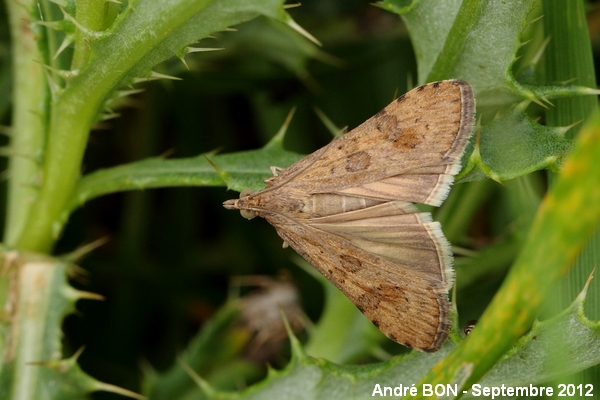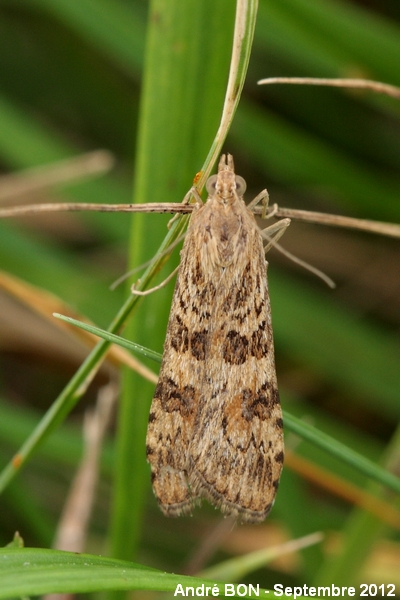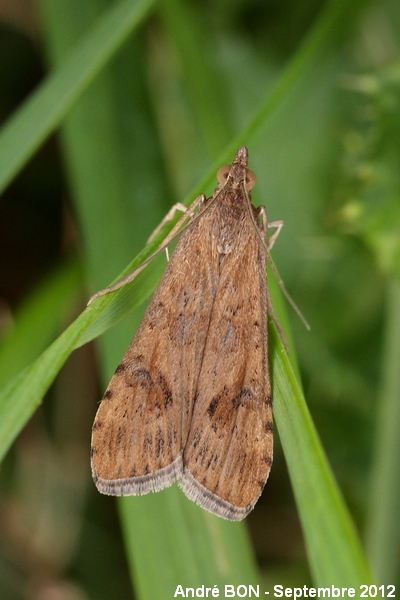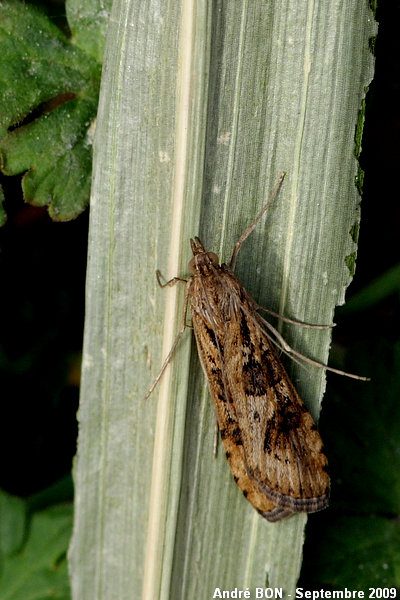



| Rush Veneer (Nomophila noctuella (Denis & Schiffermüller, 1775)) |




|
|
Scientific name: Nomophila noctuella (Denis & Schiffermüller, 1775) Common name: Rush Veneer French name: Pyrale de la luzerne Order: Lepidoptera Suborder: Heterocera Family: Crambidae Subfamily: Pyraustinae Wingspan: 26-32 mm. Biotope: Meadows, Clover and Lucerne fields. Because of migrations you can find the Rush Veneer in a lot of various habitats. Geographic area: Europe, North Africa, Central Asia, Pakistan, North America, Brazil. This species is migratory and large flocks can move northwards in summer. Flight time: May to September. Number of generations : 2 to 4. Caterpillar: The proliferation of caterpillars can cause damage to Clover or Lucerne cultivated fields. Host plant: Clover (Trifolium sp.), Lucerne (Medicago) and many other herbaceous plants. |
The Rush Veneer is characterized, like other moths of the Crambidae family, by its narrow and elongated shape when at rest, one wing over the other. The fore wings are pale brown with darker markings, eight-shaped in the median area and reniform in the post median area, next to the outer edge. There are a few dark brown spots near the outer edge close to the apex and close to the fringe. The hind wings are whitish with brown veins. |
| [To know more about the Rush Veneer] [Next picture] [Top] |

|
Rush Veneers are observed in large number in this water meadow. Here is one rare picture, among all I have shot, on which you can see the hind wings. |
| [To know more about the Rush Veneer] [Next picture] [Previous picture] [Top] |

|
Some specimens show very contrasted wings. |
| [To know more about the Rush Veneer] [Next picture] [Previous picture] [Top] |

|
Some specimens show more uniform wings. |
| [To know more about the Rush Veneer] [Previous picture] [Top] |

|
I have not observed this Rush Veneer in a Lucerne field but on the edge of a corn field. |